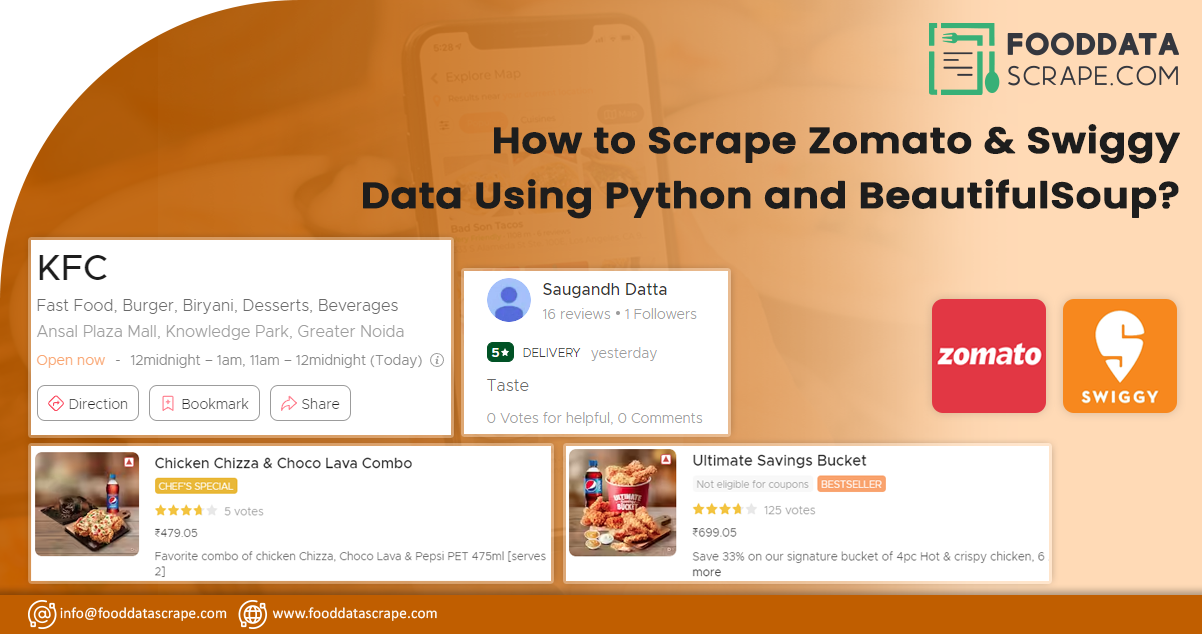Zomato and Swiggy are popular food ordering and delivery apps that have caught consumers' attention. Scrape data from Zomato and Swiggy using Food Data Scrape for restaurant name, restaurant type, menu, pricing, rating review, opening hours, discounts, and more.
Zomato is a rapidly growing restaurant discovering website established in 2008 by Pankaj Chaddah and Deepinder Goyal. Previously, it was named Foodiebay, but in 2010 it was finally renamed Zomato. It delivers information about nearby restaurants and offers facilities, including online ordering, table management, and reservation. Zomato serves 10,000 cities across 36 countries, with nearly 1.2 million famous restaurants having more than 80 million customers monthly. Available in 10 different languages, it has 10 million reviews with 18 million bookmarks. Overall, Zomato is the most comprehensive and user-friendly app allowing people to search nearby restaurants and cafes, order food online, and get it at their doorstep quickly.
Swiggy is a renowned Indian food ordering delivery platform. Started in 2014, the company is in Bangalore with operations in more than 500 cities. The data is as on September 2021. In addition to food delivery niche, Swiggy also delivers grocery on-demand under the brand Instamart and same-day delivery package service as Swiggy Genie.
Both Zomato and Swiggy are a pool of innumerable valuable data. Collecting the data via manual process is a tedious task. Hence, automating the process using web scraper can ease the process.
List of data fields from Swiggy and Zomato
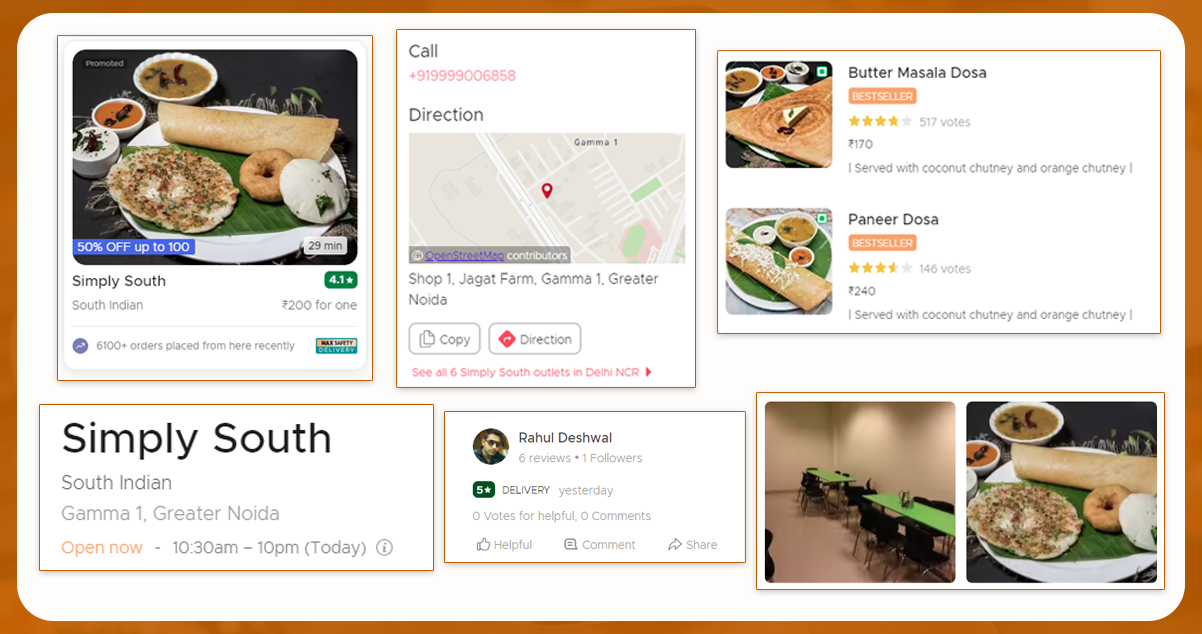
- Restaurant’s name
- Restaurant’s ID
- Address
- City
- State
- Country code
- Postal code
- Menu
- Price range
- websites
- Vote
- Review
- Rating
- Email Id
- Opening hours
- Contact details
Why Scrape Swiggy and Zomato Data
There are several significant reasons why scraping Swiggy data is essential. A few of them are as follows:.
- Continuous Usage of Swiggy Apps:
- Track New Menus and Restaurants in Your Area:
- Strategize Menu Pricing and Marketing:
Swiggy and Zomato occupy the most significant marketplace when ordering food online. Owing to the threat of Covid-19, home dining increasingly became popular. It has given reason to customers the to order food in the comfort of their homes. The data produced by customers are essential to understand their sentiments and using it for enhancing business.
Scraping Swiggy and Zomato data allows you to find which menu is trendy among the customers and which restaurant offers types of cuisine, including fast foods, healthy foods, multi-cuisine, etc. Being a restaurant owner, you can use the data to add new cuisine to your menu list.
Discounts and offers often lure customers. Scraping data on Swiggy and Zomato lets you understand which restaurant offers discounts and to what extent.
Scraping Zomato and Swiggy Data with Python and BeautifulSoup
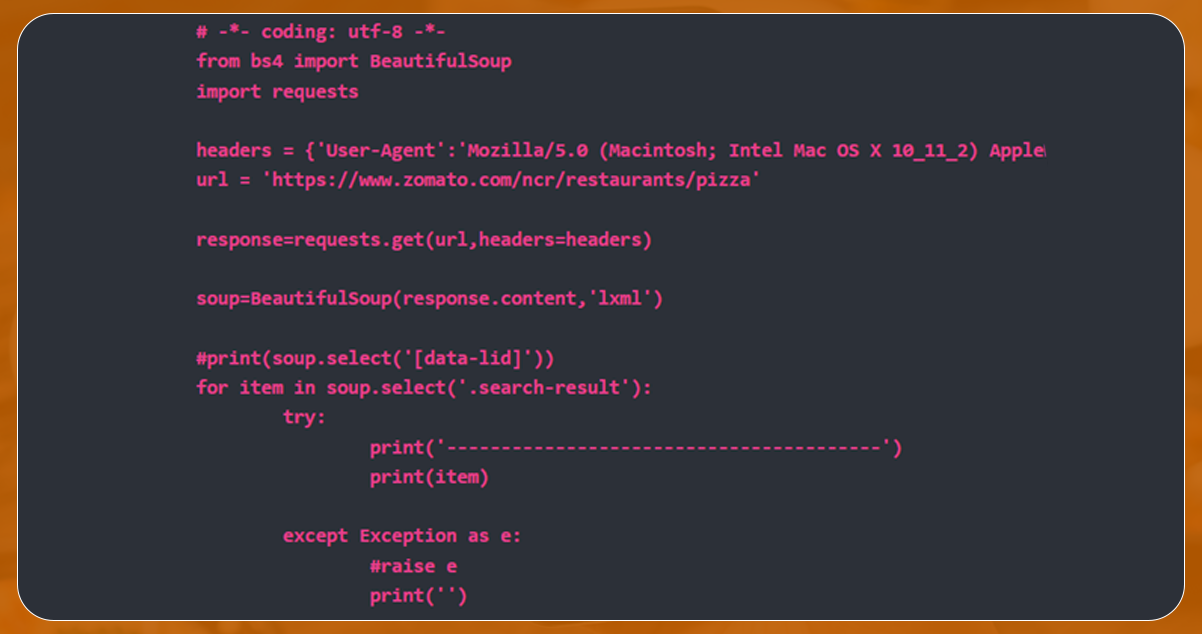
One of the advantages of web scraping is to collect data for restaurant lists from several sites. Here, we will retrieve hotel information from Zomato and Swiggy using BeautifulSoup. To scrape Zomato restaurant data or Swiggy data, we will first get the Zomato and Swiggy search result page and set up BeautifulSoup to use CSS selector for querying the page for essential data.
We will pass the user agent headers to avoid blocking to stimulate a browser call. Let’s get the Zomato and Swiggy search results for the desired destination. It will appear like this.
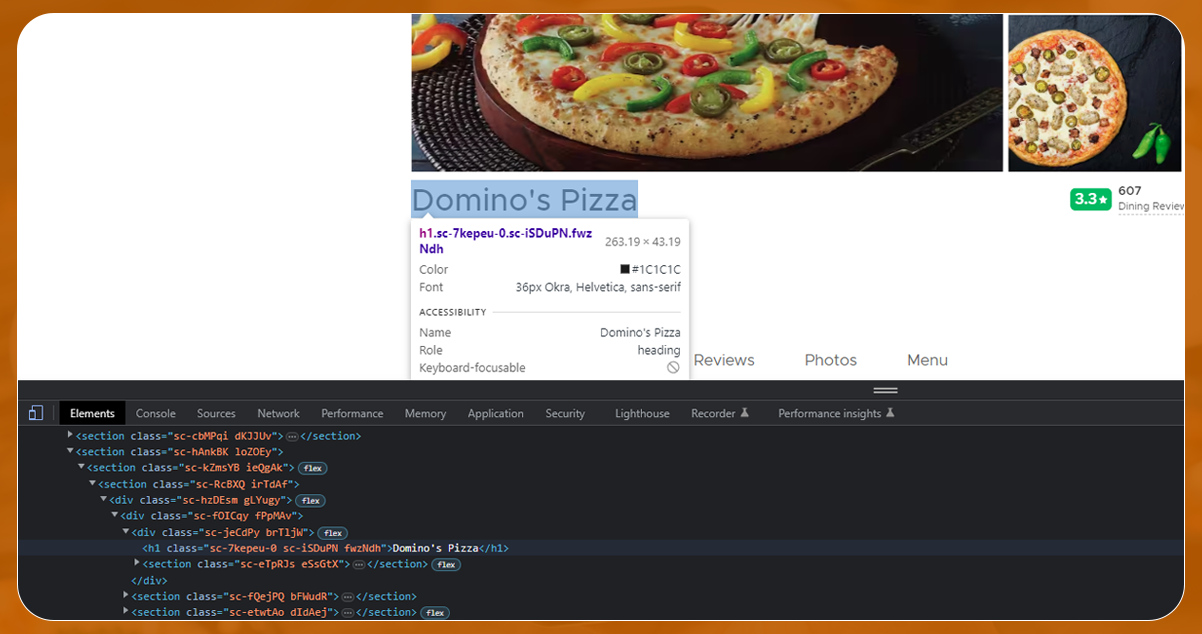
After inspecting the page, we get that each item HTML is in a class-result tag.
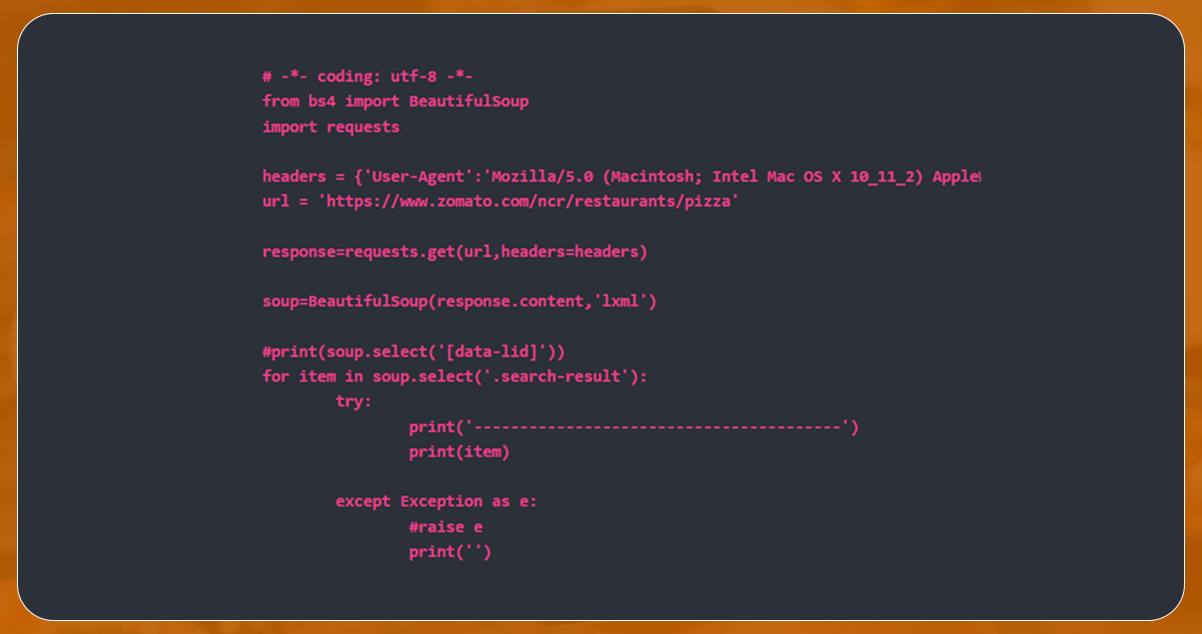
Now, break the HTML document into the parts that contain individual item information like this:
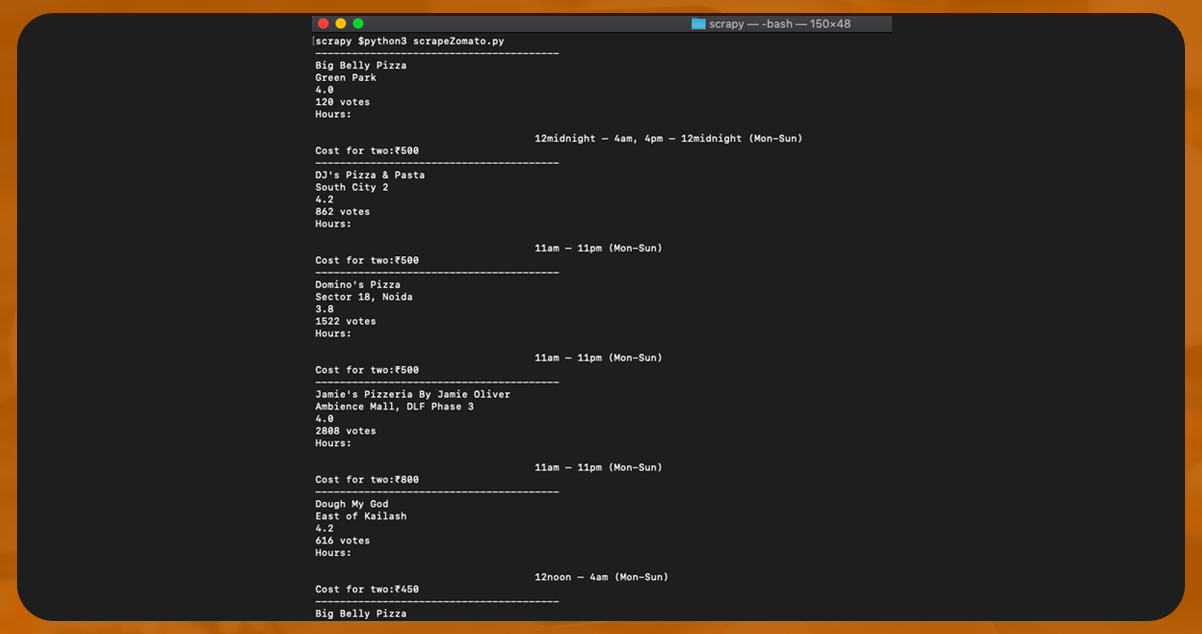
After running, we will obtain this.
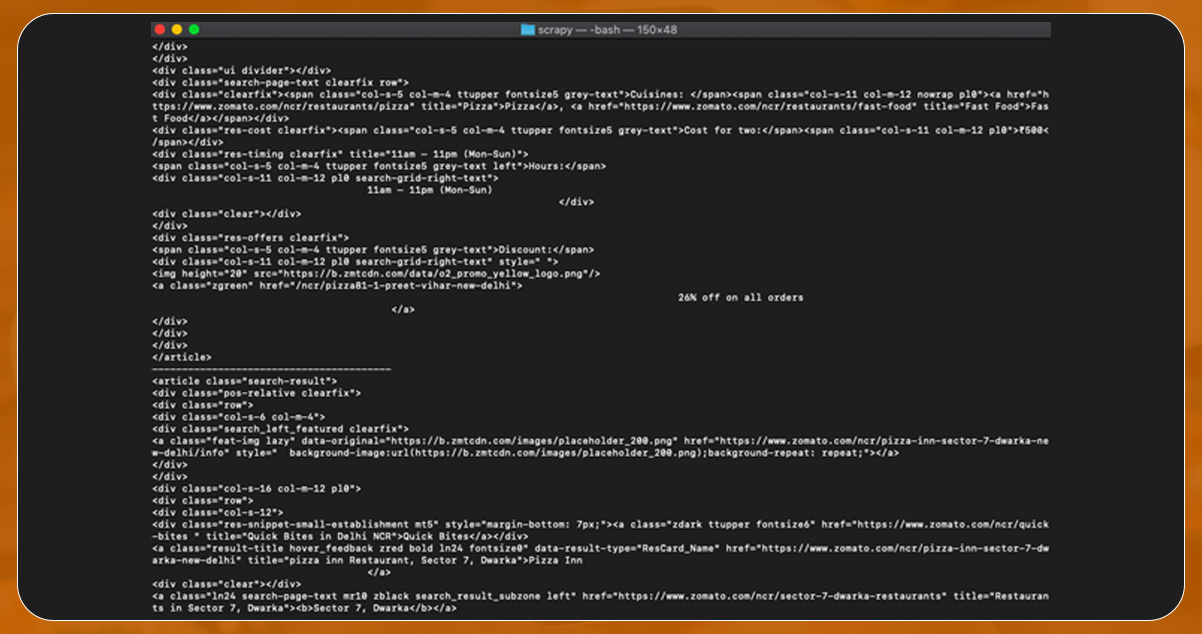
It indicates that the code isolates the card’s HTML.
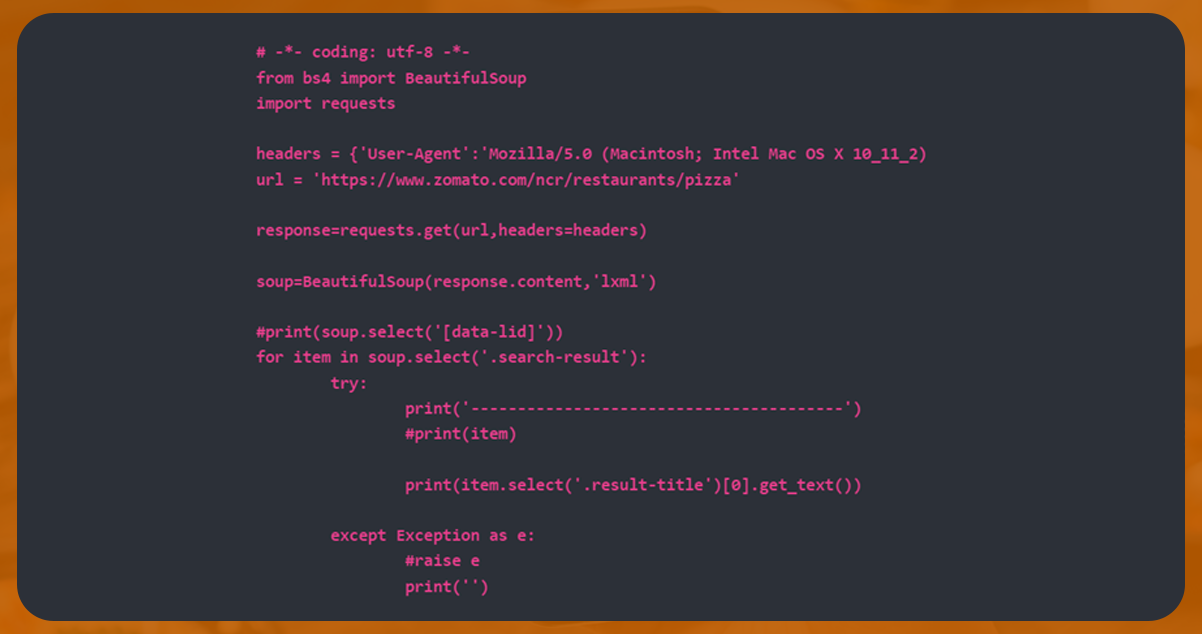
After inspecting further, you will see that the restaurant’s name has the class title. So, we will retrieve it.
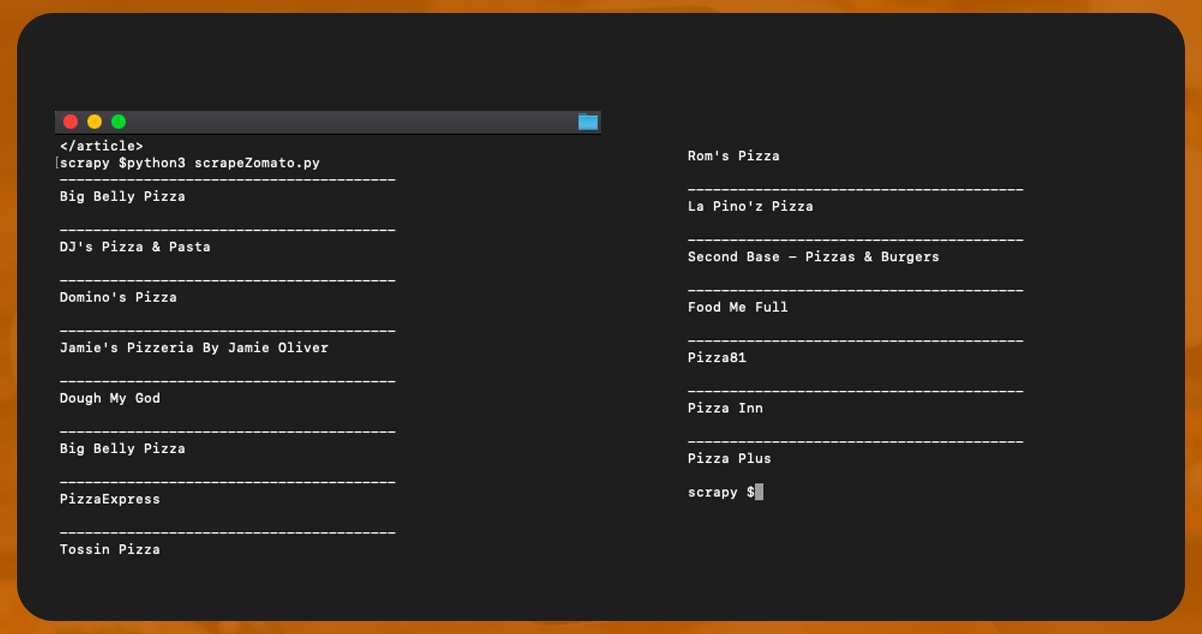
We will get the names like this.
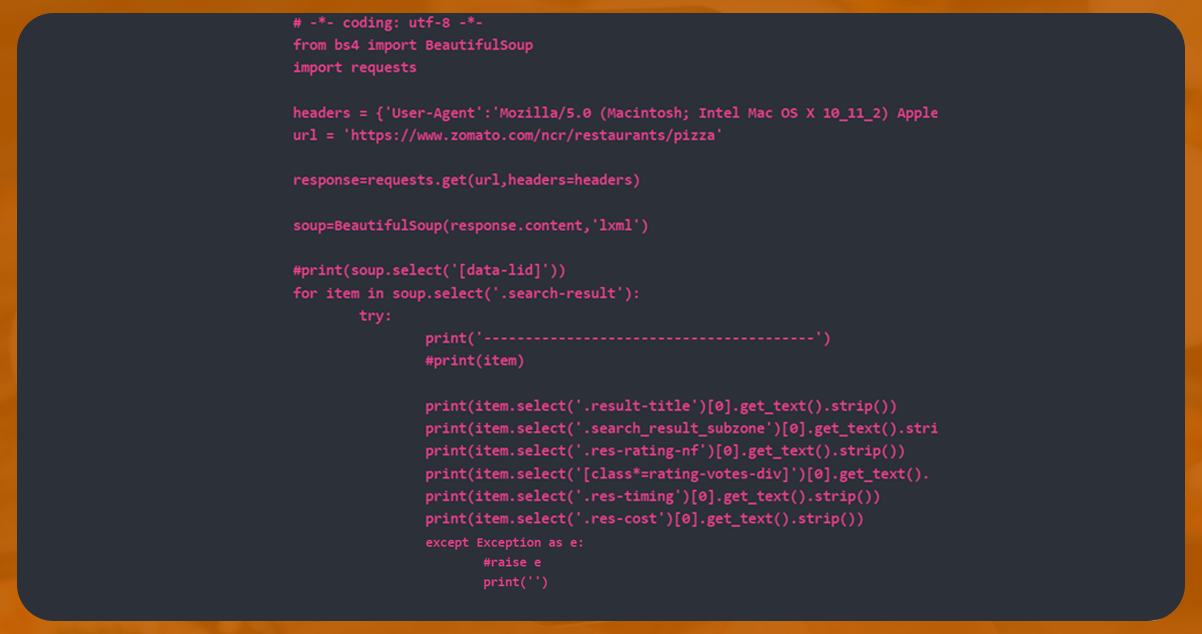
Now, let’s try to get other data.

After running, we get.
We have all the info, including ratings, reviews, price, and address.
Extracting Swiggy and Zomato Data
Over the years, the complete process of creating apps and websites has grown massively. The objective to scrape Swiggy restaurant data varies from business to business. Food Data Scrape provides a customized data extraction solution to help monitor the data per the requirements. The structured data is available in downloadable format in CSV, XML, Excel, and JSON files
For more information, contact Food Data Scrape now! You can also reach us for all your Food Data Scraping service and Mobile Restaurant App Scraping service requirements.
























































































